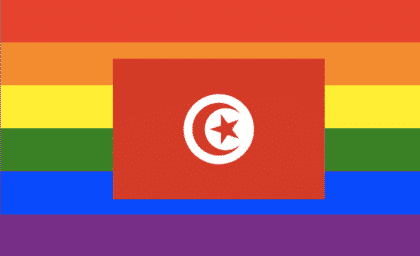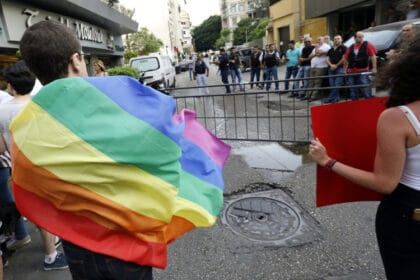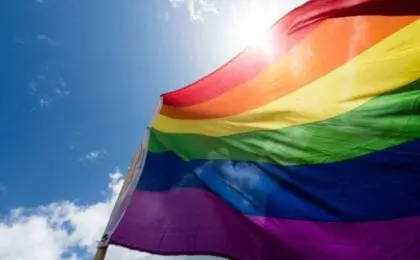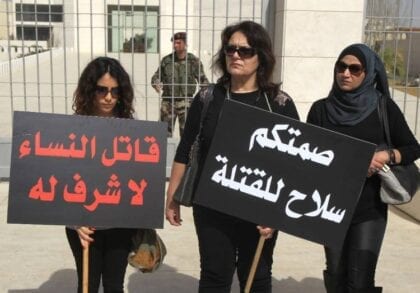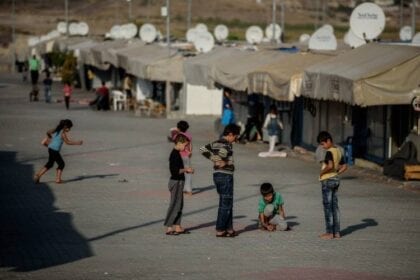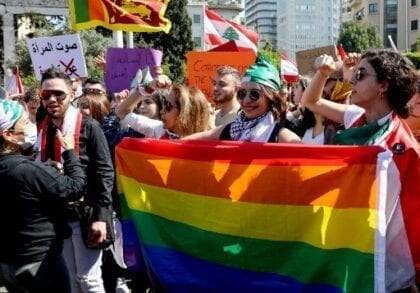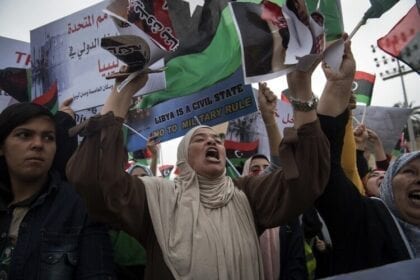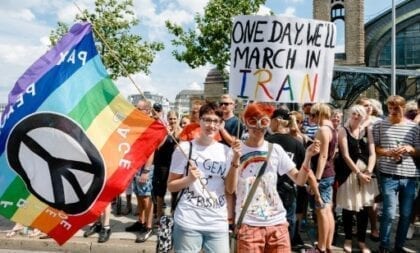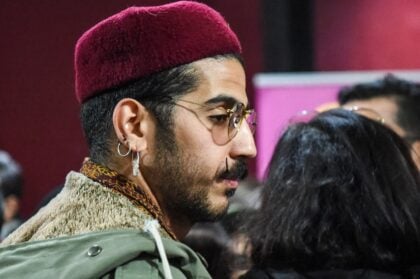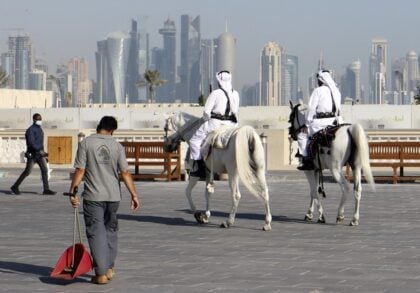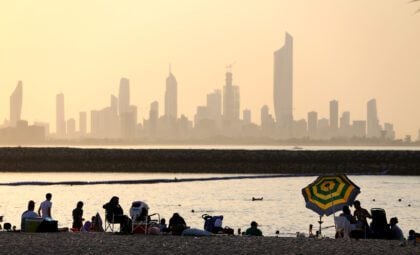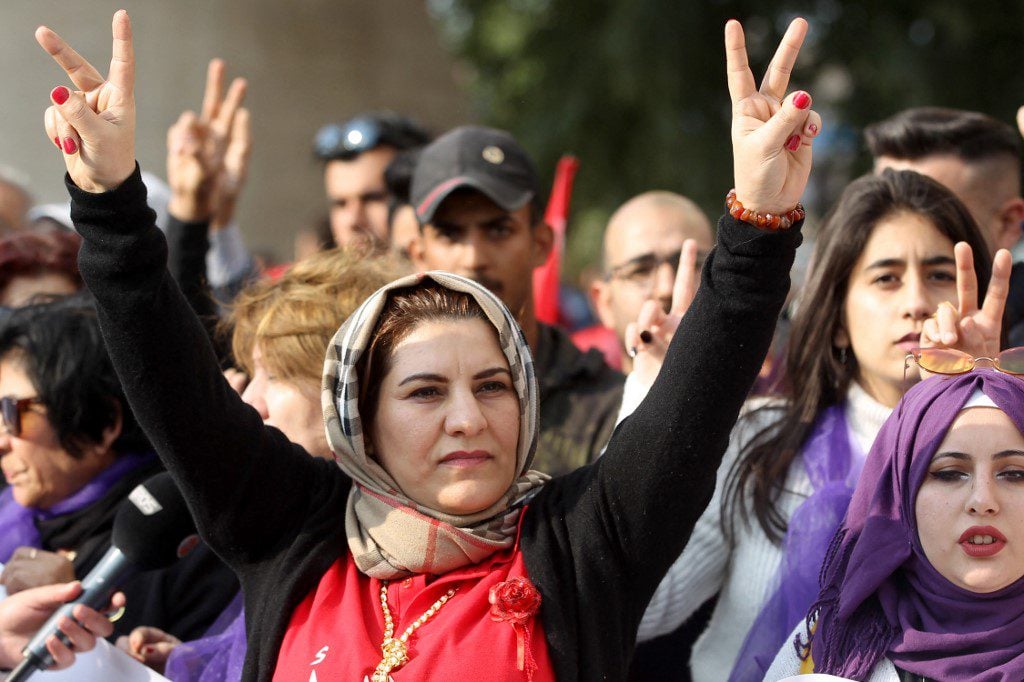
Introduction
Every human being has acquired rights that are established as soon as they are born, international laws and conventions guaranteed this right. It is expressly stated in the Universal Declaration of Human Rights that “Everyone is entitled to all the rights and freedoms set forth in this Declaration, without distinction of any kind, such as race, color, sex, language, religion, political or other opinion, national or social origin, property, birth or other status.”
Due to the development of societies, the active role of women (in various social areas) has increased in economic, political, and cultural areas; Therefore, it was imperative that a legal system be introduced that treats men and women equally, and prevents infringing their rights in any way, subject to legal accountability. International conventions and national legislation have provided a set of rights for women, some of which they share with men, such as the right to live, the right to own property, travel, and the right to physical security, while other rights are specific to women and consider the social, economic, political, and cultural situations women face.
Women’s rights are defined as the recognized benefits for women that consider their specificity and their different nature from men. So, how did women’s rights arise from ancient times and what are the stages they have gone through, what rights have they acquired, have Arab laws actually achieved equality between men and women by the same methodology or is there a difference between the legal systems in deciding women’s rights? In this article, these questions and more will be addressed, answered, and discussed.
Evolution of Women's Rights
In the past, women suffered inhumane treatment and were stripped of their rights, unlike men. Historically, women in the Greek and Roman eras were deprived of their human rights and were subjected to the authority of men in managing their finances, lived isolated from society, and their role was limited to reproduction. They allowed women to carry out all activities that would increase their physical strength so that they could produce strong men.
The Abrahamic religions focused heavily on women’s rights and gave them special attention. Jews ‘ adherence to the Torah’s original values that honor women and their status did not limit their exposure to violence in all its forms, while Christianity corrected this approach and granted women social and economic rights derived from its teachings. Civil laws, however, took away some of women’s rights, depriving them from education and allowing beating and punishing them.
In the pre-Islamic era, the situation of women varied. They enjoyed the freedom to manage themselves and their own finances without the authority of men. In return, they were stripped of their human rights, as they suffered infanticide and deprivation of inheritance. Over time, they rose in status, participated in wars, and enjoyed eligibility to conduct financial transactions while working in trade.
Islam ’s rise came and demonstrated the concepts of justice and equality, where women had the largest share of these concepts, as well as prohibiting any kind of abuse and violence against them and achieve actual equality between women and men, as they are both humans and neither is better than the other. Islam also set principles that respect women’s status and dignity. Just like men, women enjoyed the same civil, political, social, economic, and cultural capacities that were granted to men, such as the right to education, work, marriage, be provided for, inheritance, and to express their opinion.
Then the international role moved to recognize women’s rights and equality with men indiscriminately and facing the challenges, to which they are exposed, so international organizations and conventions took the necessary steps to establish legal rules protecting all women’s affairs in all aspects. Many of them demanded that women’s affairs be given attention, and the French Revolution (1789-1799) was the beginning of efforts aimed at eliminating violence against women. This revolution is considered to have had the greatest impact on human rights, and one of the principles it stood and called for was that women are born free and are equal to men in all respects.
Efforts to combat violence against women continued until the International Council of Women was established in Paris in 1888. It played a role in ensuring women’s rights through international and regional meetings and in cooperation with organizations. At the beginning of the 19th century, many conventions and treaties were passed to eliminate forcing women into prostitution, and work continued against trafficking women, through treaties and conventions fighting this phenomenon. Institutions were established to help those who have been harmed, provide them with decent lives, pursue the perpetrators, and punish them.
International Treaties and Conventions
International treaties focused on human rights, and the 1945 Charter of the United Nations was the first international treaty that believed in fundamental human rights without discrimination. A key part of it was giving its member states the responsibility of amending their laws in accordance with international conventions, emphasizing equality between men and women with regards to their rights, obligations, and basic freedoms without discrimination on the bases of gender, language, or religion.
The Universal Declaration of Human Rights was issued in December 1948, which is considered one of the most prominent and influential UN documents among the international community. The Declaration established and acknowledged political, civil, economic, social, and cultural rights, and that human beings have the right to enjoy them. There is no provision in the Declaration indicating the deprivation of men or women or discrimination of one over the other. Rather, it addressed human beings without discrimination.
The Universal Declaration of Human Rights included the civil and political rights granted to individuals, the most prominent being the right to live and the resulting rights associated with it such as privacy, freedom of movement, prohibition of slavery, and torture, the right to marry and form a family, the right to hold public office, the right to acquire a nationality.
It also stressed the right to a fair trial, and recognized the economic, social, and cultural rights necessary for a human being to remain free of any restriction, including the right to work for equal wages and the freedom to choose to work, the right to receive medical care and ensured free and compulsory education and the dissemination of culture.
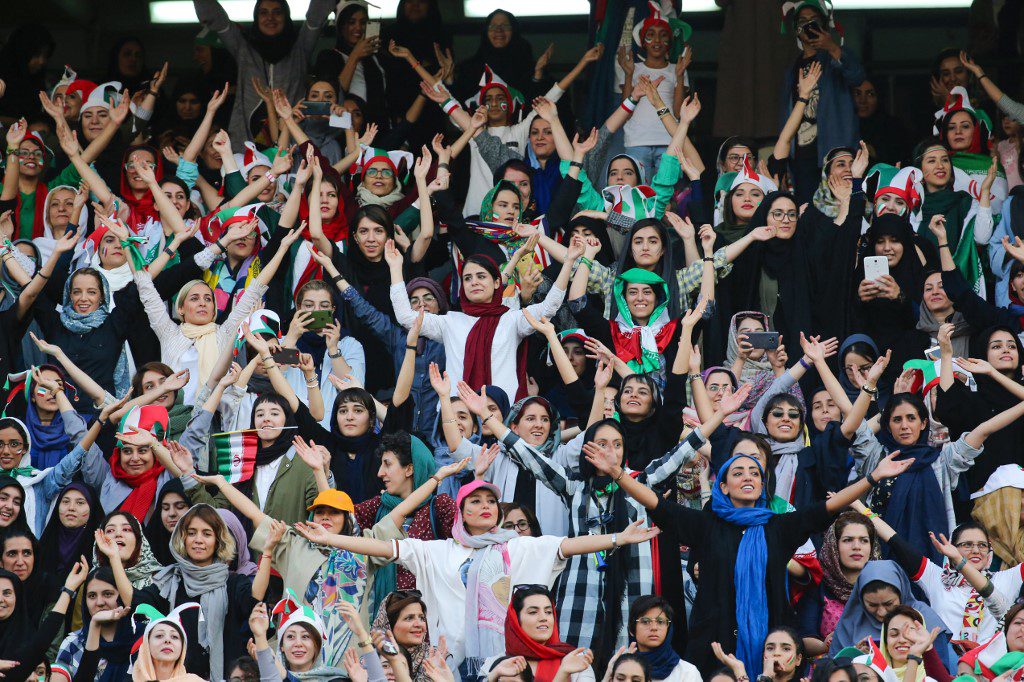
However, the lack of legal force meant that the Universal Declaration of Human Rights did not meet the needs of the international community, which led to the General Assembly demanding an international state-binding treaty that promotes the protection of women’s rights.
As a result, two international covenants on human rights were issued in accordance with established principles based on equal rights and duties for men and women, which dictate that legal status cannot be different nor diminished based on gender, and obligated states to recognize these rights under their own laws equally between men and women.
Due to the different nature of the rights granted to humans, the two international covenants were formulated according to the types of rights, one of which focuses on civil and political rights, granting women the right to vote and run for office, to hold public office, and to address the authorities equally with men and without any discrimination.
The other focuses on economic, social, and cultural rights, as it states the right to work, be paid, receive bonuses, leave, breaks, and promotion, in addition to their right to form unions and receive social security. It also protects mothers by granting them paid maternity leaves, along with all the benefits, in addition to providing the necessary medical care for individuals and the equal right for men and women to free education without discrimination of any kind and at all levels.
Conventions tailored to women regarding their rights and in line with their differences from men were also established. The first of these was the Convention on Women’s Political Rights, which recognized explicit provisions of women’s political rights and was adopted by a UN General Assembly resolution in 1952. It included the principle of equality between men and women in the political process, affirming women’s right to vote and participate in all elections, as well as the guarantee of women’s right to hold public office and exercise all public functions.
The Declaration on the Elimination of Discrimination against Women was the essence and basis of international norms behind issuing a special international convention aimed at eliminating discrimination against women.
It was an official international statement eliminating gender discrimination issued by the UN and was adopted by the General Assembly in November 1967, which aimed to combat discrimination, seek equality with men, and oblige member states to take the necessary measures to repeal laws and practices based on discrimination. Furthermore, it also aimed to determine legal protection so that men and women have equal rights, and to stop behaviors that diminish their dignity.
It also stipulates that women enjoy the right to own and manage their assets and are as competent as men without discrimination. It also ensured the rights of the families by ratifying the right for women to choose their husbands without restrictions and prohibiting the marriage of minors by setting a minimum age limit for marriage, while emphasizing the need to fight all forms of abuse or trafficking of women and taking all the necessary measures to achieve this.
It also stressed the need to not give preference to men in economic and social areas including employment, salaries, leaves, preventing the dismissal of pregnant women and granting them paid maternity leaves upon giving birth.
The Convention on the Elimination of All Forms of Discrimination Against Women (CEDAW) is the result of efforts to give women their rights, making it the most important international convention that aims to protect women’s rights and seeks absolute equality with men. It was adopted by the UN General Assembly in December 1979 and was implemented in September 1981.
It is in accordance with the Universal Declaration of Human Rights that all people are born free and are equal in dignity and rights, and that every human being has the right to enjoy it without discrimination, in addition to what the two international covenants state on human rights that equality between men and women in various political, economic, cultural, civil, and social fields.
More than 189 countries ratified the convention, including all countries in the Middle East, except Iran and Sudan, as evidence that they support the need to recognize women’s rights and equality with men, while expressing some reservations about the provisions of the convention contrary to Islamic law. Reservations focused on the articles that grant complete gender equality in violation of Islamic law are:
- Article (2) on the prevention of discrimination against women and the pledge to amend national constitutions and legislations and to take all appropriate measures to eliminate discrimination against women. Reservations were expressed by Iraq, Algeria, Libya, Egypt, Bahrain, Syria, as they were prepared to implement the provisions of this article, provided they do not conflict with national laws.
- Article (7) on political life and women’s equality with men in the right to vote in elections and hold public office. Kuwait expressed reservations.
- Article (9/1) grants women an equal right to retain, acquire, or change their nationalities independently and equally to men. Iraq and the United Arab Emirates had reservations as it violates their national laws.
- Article (9/2) pertaining the granting of women equal rights to men regarding the nationality of their children. Jordan, Lebanon, Iraq, Oman, Qatar, Saudi Arabia, Kuwait, and the Maghreb countries had reservations.
- Article (15/4) Jordan, Morocco, Oman, Qatar, Bahrain, and Syria all had reservations regarding their commitment to implement this article concerning the dependency of women on their husbands regarding their residence and freedom of movement.
- Article (16/C, D, G) pertaining the family rights of women, which is the article with the most reservations from Islamic countries including Jordan, Lebanon, Oman, Qatar, Syria, Tunisia, and Libya, where the granting of men and women the same rights in the marriage contract, guardianship, the freedom to choose the family name and the rights related to raising children, custody, inheritance and children taking their father’s name constitute a fundamental violation of the principles of Islamic law, while the rest of the countries had reservations regarding the full paragraphs of this article such as Morocco, UAE, Egypt, and Bahrain.
- Article 29 relates to arbitration between countries, about which most Arab countries had reservations.
The reservations held by some of the mentioned countries, as well as their refusal to abide by all the provisions stated in the treaty, poses the question, to what extent do these countries apply these articles? These countries have committed to implementing and amending their laws in a manner that contributes to the empowerment of women and their equality with men, which in turn results in economic, social, and cultural growth.
In this regard, one can say that women in the Middle East and Africa have significant legal equality compared to the past in many aspects of life, but they still suffer from some legislations that give men advantages over women. So, how have states worked to reduce the gap in women’s inequality with men, and in what aspects have they achieved equality between them and men?
Types of Women's Rights
In terms of work
We find that most Arab legislations in the Middle East and North Africa have adhered to the international treaties in this regard, and with regard to the directives adopted by the Arab Labor Organization with some differences in the details. Countries have obliged employers to guarantee women their right to maternity leave, with no discrimination in terms of length of leave or the amount of money received.
This comes as an attempt to eliminate any discrimination between the sexes as a means of empowering women and granting them equal rights. It is important to note that various countries also offer breastfeeding leaves for periods that vary from country to country.
The United Arab Emirates (UAE) was the first country in the Middle East and North Africa to implement a paid holiday system for parents, in order to support working women. Women in the UAE’s workforce in terms of the rate of participation is higher than in neighboring countries, where, according to the World Bank, in 2020 it reached 57.5% of the total number of women compared with 92% of men. They also prohibited the termination of pregnant women from the sixth month or during maternity leave, in addition to ensuring a woman’s right to social security benefits in retirement and work injuries.
The Jordanian Social Security Act provides for the retirement of women once they reach the age of 55, while the retirement age for men is 60. On the other hand, to empower women, women are given the same rights as men to choose a profession and the right to pay and promotion.
According to a 2020 World Bank report, the Middle East and North Africa are the regions that have worked the most on legislative and regulatory changes to strengthen the economic role of women. For example, while the UAE has worked to close the gap between men and women, especially with regard to wages, it was followed by Tunisia, Egypt, and Jordan.
In recent years, the Saudi legal system has witnessed a clear reflection and reforms in women’s rights and protection against discrimination in jobs. These reforms have contributed to raising equality between men and women and equality in wages, retirement age, and other workers’ rights.
In addition to that, all obstacles which women faced in their freedom of movement were removed by granting them the right to drive or providing transportation to and from work and childcare services to working mothers. These amendments have increased women’s participation rate and motivated them to work.
Despite the reforms in Saudi Arabia, it must be mentioned that dozens of women’s rights activists who had pushed for women’s rights were arrested and subsequently branded as traitors. This has raised questions about the real impact of the so-called reforms being implemented in the country.
Global Gender Gap Index
| World Rank | Mena Rank | Country | Score (0-1) |
| 64 | 1 | Israel | 0.718 |
| 120 | 2 | UAE | 0.655 |
| 122 | 3 | Kuwait | 0.65 |
| 124 | 4 | Tunisia | 0.644 |
| 130 | 5 | Turkey | 0.635 |
| 132 | 6 | Algeria | 0.634 |
| 133 | 7 | Bahrain | 0.629 |
| 134 | 8 | Egypt | 0.629 |
| 135 | 9 | Qatar | 0.629 |
| 138 | 10 | Jordan | 0.623 |
| 143 | 12 | Morocco | 0.605 |
| 144 | 13 | Oman | 0.602 |
| 145 | 14 | Lebanon | 0.599 |
| 146 | 15 | Saudi Arabia | 0.599 |
| 148 | 16 | Iran | 0.584 |
| 150 | 17 | Syria | 0.567 |
| 152 | 18 | Iraq | 0.53 |
| 153 | 19 | Yemen | 0.494 |
The countries are ranked according to the calculated gender gap between women and men in four key areas: health, education, economy, and politics. The score measures the women’s disadvantage compared to men. Source: The Global Gender Gap Report 2020, World Economic Forum
Global Gender Gap Subindex: Economic Participation and Opportunity
| World Rank | Mena Rank | Country | Score (0-1) |
| 67 | 1 | Israel | 0.688 |
| 120 | 2 | Kuwait | 0.589 |
| 132 | 3 | Qatar | 0.512 |
| 133 | 4 | Bahrain | 0.51 |
| 136 | 5 | Turkey | 0.478 |
| 137 | 6 | UAE | 0.472 |
| 138 | 7 | Algeria | 0.461 |
| 139 | 8 | Lebanon | 0.442 |
| 140 | 9 | Egypt | 0.438 |
| 142 | 10 | Tunisia | 0.434 |
| 143 | 11 | Oman | 0.431 |
| 145 | 12 | Jordan | 0.408 |
| 146 | 13 | Morocco | 0.405 |
| 147 | 14 | Iran | 0.381 |
| 148 | 15 | Saudi Arabia | 0.375 |
| 151 | 16 | Yemen | 0.273 |
| 152 | 17 | Syria | 0.249 |
| 153 | 18 | Iraq | 0.227 |
The countries are ranked according to the calculated gender gap between women and men in four key areas: health, education, economy, and politics. The score measures the women’s disadvantage compared to men. Source: The Global Gender Gap Report 2020, World Economic Forum
Labour Participation Rate
The chart shows the proportion of the population ages 15-64 that is economically active: all people who supply labor for the production of goods and services. Source: International Labor Organization, ILOSTAT database.
In terms of personal status
The Personal Status Act is defined as a set of rules that regulate personal status, including marriage and the resulting effects such as dowry, alimony, breastfeeding, custody, and divorce, In inheritance provisions, and in reference to international conventions. It has been found that international law has given absolute equality of rights between the sexes in divorce, without regard to the provisions of Islamic law, while Islam, in some respects, equates men and women.
Inequality between men and women in matters of personal status is seen in the fact that women in the majority of Arab countries such as Jordan, UAE, Saudi Arabia, Qatar, and Kuwait do not have sufficient eligibility to marry themselves, and their marriage depends on the consent and presence of their guardians. There are limited exceptions as determined by the law of each country.
There are exceptions to this principle, in Jordan women are allowed the right to marry themselves through a judge if the guardian does not have a legitimate reason for the rejection of the marriage, while the legislation merely informs the wife in case the husband wishes to take a second wife without requiring her consent, though Islamic law prohibits her to take on multiple husbands.
With regards to custody, women also face a challenge as their right to custody of their children ends when the children reach the age of fifteen, and for someone other than the mother until they reach the age of 10, and she is denied this right when she remarries, whereas a man does not lose this right if he decides to remarry.
In contrast, the situation of women in Morocco is different, where, in order to ensure actual gender equality, the Moroccan legislation stipulates equal legal capacity to conclude the marriage contract and sets it at the age of 18. It has also abolished the need for a guardian to marry, so an adult woman can marry herself off. There are also restrictions on polygamy under judicial supervision.
Meanwhile, Arab states have issued laws making men and women equal in some areas such as the right to fund a family within a legitimate contract. States have differed with regards to setting the minimum age of marriage, such as Morocco, where the minimum legal age of marriage was raised from 14 to 18; Iran, where it is still 13 and Lebanon, which has not defined any minimum age.
The two parties to the marriage contract are obligated to abide by these conditions equally through the rights and duties of each of them toward the other in the joint care of the spouses, in taking responsibility for the house and children and making decisions, and in the same legal status and being subject to the same legal procedures in the event of recourse to the judiciary.
The personal status law has been amended in several countries, including Jordan and the UAE, to repeal a provision requiring women to obey their husbands. Women are now able to choose their own place of residence and travel like men without restrictions.
In Saudi Arabia, reforms included laws that reduced the dominance of the religious current by granting the wife the right to receive a copy of the marriage contract after expressing her verbal consent to the marriage and allocating an alimony fund for divorced women and children. Centres for child custody visitations have been provided for, allowing women to practice legal actions without a guardian, abolishing the provisions that compel the wife to return to her husband’s home, and granting any women who have reached the age of 21 the right to travel without any conditions.
The rules governing inheritance in accordance with Islamic law are indisputable, under which the male is given the same amount as two females from the estate owned by the deceased. The justification for this is the responsibility placed on the man in life. Islam has protected this right and prevented overstepping it.
But in Tunisia, demonstrations broke out in March 2018, after the reservations on the Convention against Discrimination against Women were lifted, calling for an end to what they deem as discrimination against women with regards to the inheritance, demanding its abolition and that men and women receive equal shares of the inheritance. The Personal Status Law was amended, but the draft law has not been implemented as of the publication date of this report.

In terms of political empowerment
The Middle East and North Africa remains the region with the lowest representation in administrative, leadership, and legislative council positions in the world. This is due to social and cultural constraints that impede female empowerment and prevents equal political participation. However, there has been noticeable improvement lately in women’s civil and political rights.
In Egypt, women make up 44.5% of the workers in the government institutions while in Jordan, a quota of 15 seats out of the total number of seats goes to women so they can exercise their right to run for the House of Representatives. Jordan is one of the first Arab countries to develop a comprehensive plan for women’s participation in conflict prevention and spreading peace.
Jordanian women participated in peacekeeping forces in 2011. According to the latest statistics in 2019, women’s participation in parliament reached 15.4%, and in the senate, women held in 12% of the total membership, and 41% in municipal councils. In the 2020 government, women held three of the 27 ministries: the Ministry of Energy and Mineral Resources, the Ministry of Institutional Performance Development, and the Ministry of Social Development, after the previous government included four female ministers.
Saudi Arabia has made remarkable progress in this field. It worked to bridge the gender gap in political empowerment after it was the last country to grant women the right to vote and run for elections. Women’s first participation in elections was in the 2015 municipal elections.
According to human resources statistics attached to the 2021 budget bill, the female presence in senior positions in Morocco, which are the positions being deliberated in the Government Council, women held 137 out of a total of 1,160 senior leadership positions.
Women in Ministerial Positions
| World Rank | MENA Rank | Country | %Women | Women | Total Minister |
| 53 | 1 | Lebanon | 31.6 | 6 | 19 |
| 65 | 2 | Tunisia | 29.2 | 7 | 24 |
| 72 | 3 | UAE | 27.3 | 9 | 33 |
| 77 | 4 | Israel | 25 | 7 | 28 |
| 78 | 5 | Egypt | 24.2 | 8 | 33 |
| 100 | 6 | Sudan | 20 | 4 | 20 |
| 119 | 7 | Morocco | 15.8 | 3 | 19 |
| 127 | 8 | Algeria | 14.7 | 5 | 34 |
| 139 | 9 | Oman | 12 | 3 | 25 |
| 140 | 10 | Turkey | 11.8 | 2 | 17 |
| 150 | 11 | Syria | 10.3 | 3 | 29 |
| 159 | 12 | Jordan | 9.4 | 3 | 32 |
| 161 | 13 | Iraq | 9.1 | 2 | 22 |
| 165 | 14 | Qatar | 7.1 | 1 | 14 |
| 167 | 15 | Iran | 6.7 | 2 | 30 |
| 168 | 16 | Kuwait | 6.7 | 1 | 15 |
| 172 | 17 | Libya | 5.6 | 1 | 18 |
| 175 | 18 | Bahrain | 4.5 | 1 | 22 |
| 189 | 19 | Saudi Arabia | 0.0 | 0.0 | 23 |
| 194 | 20 | Yemen | 0.0 | 0.0 | 24 |
The countries are ranked according to the percentage of women in ministerial positions, reflecting appointments up to 1 January 2021. Source: UN Women ; According to UN Women, the government of the State of Palestine as of 1 January 2020 includes three women, out of 23 ministers, which corresponds to 13 percent of the total number of ministers. However, Palestine was not included in their ranking.
Women in Lower or Single House
| World Rank | Mena Rank | Country | %Women | Women/Seats |
| 3 | 1 | UAE | 50 | 20/40 |
| 65 | 2 | Egypt | 27.4 | 162/591 |
| 72 | 3 | Israel | 26.7 | 32/120 |
| 76 | 4 | Iraq | 26.4 | 87/329 |
| 77 | 5 | Tunisia | 26.3 | 57/217 |
| 82 | 6 | Algeria | 26 | 120/462 |
| 114 | 7 | Morocco | 20.5 | 81/395 |
| 119 | 8 | Saudi Arabia | 19.9 | 30/151 |
| 130 | 9 | Turkey | 17.3 | 104/600 |
| 137 | 10 | Libya | 16 | 30/188 |
| 157 | 11 | Jordan | 11.5 | 15/130 |
| 160 | 12 | Syria | 11.2 | 28/250 |
| 167 | 13 | Qatar | 9.8 | 4/41 |
| 180 | 14 | Iran | 5 | 16/286 |
| 182 | 15 | Lebanon | 4.7 | 6/128 |
| 185 | 16 | Oman | 2.3 | 2/86 |
| 186 | 17 | Kuwait | 1.5 | 1/65 |
| 187 | 18 | Yemen | 0.3 | 1/301 |
The countries are ranked according to the percentage of women in unicameral parliaments or the lower house of parliament, reflecting elections/appointments up to 1 January 2021. Source: UN Women
In terms of women passing on nationality to their children
Nationality is what binds a person to their country. According to the UNHCR in its overview of gender equality and nationality laws in the region, nationality laws in several countries in the Middle East and North Africa do not grant equality to women with regard to the right to pass on their nationality to their children. This is why countries have started discussing the nationality laws and the possibility of making legal amendments to mitigate the impact of limiting nationality rights to the father.
The countries in the Middle East and North Africa can be divided into two groups: the first categorically refuses to allow the mother to grant her nationality to her children without exception or with very limited exceptions, even if this results in children not holding any nationality. This group is represented by Lebanon, Qatar, and Kuwait.
The second group includes Jordan, Syria, Bahrain, Iraq, Libya, Oman, Saudi Arabia, and the UAE, which do not allow mothers to grant their citizenship to their children with some exceptions to the rule, such as if the father is unknown or stateless. They are working to facilitate matters for these groups by granting them residency, education, health benefits, and jobs to the best of their abilities. Morocco, however, grants Moroccan citizenship to the children of Moroccan women married to foreigners, whether she resides in Morocco or abroad.
For example, Qatar does not allow Qatari mothers to pass on their nationality to their children, without exception, even if this would result in statelessness of the child. When a Kuwaiti mother has a child with a father who is unknown or whose paternity has not been established, the individual concerned may apply for Kuwaiti citizenship when he/she has reached the age of maturity. In Lebanon, Lebanese women can only pass on their citizenship if the child is born out of wedlock and recognized by the Lebanese mother while a minor.
Other countries in the region have similar constraints in place when it comes to mothers passing on their nationality to their children.
Women's Institutions
The Arab League has paid attention to women’s affairs. It established the Arab Women’s Committee in 1971 to empower women and the Arab Women’s Organization in 2000 to contribute to developing the status of women and strengthening their role in society.
The Second Protocol to the African Charter on Human and Peoples’ Rights is considered the most important of its efforts regarding women’s rights in Africa. It was adopted in 2003 as a distinct step in demonstrating efforts aimed at respecting women’s rights. In February 2018, the Arab League adopted the Arab Declaration on Belonging and Legal Identity, which calls for gender equality legislation in terms of nationality in all Arab League member states.
The Arab Charter on Human Rights issued by the Arab League is also the first comprehensive Arab agreement on human rights, including texts particular to women, which was put into force in 2008 and ratified by 7 Arab countries. The League of Arab States and the GCC continue their efforts to empower Arab women and advance their role and participation in society.
They do so through relevant national, regional and international organizations, including the Arab Women’s Organization, the UN Women, and civil associations established to bridge the gender gap by integrating women into society and making them equal to men.
To empower women and commit to applying the provisions guaranteeing gender equality and not violating them, countries have continued to put measures in place for their proper implementation through forming committees and trained and equipped entities that implement the provisions and take the necessary steps and allow individuals to complain against anyone who fails to comply with the terms of the agreements.
The role of civil society organizations and women’s associations cannot be neglected in adhering to the sustainability of women, empowering them, and equalizing them with men in rights and duties, which has made remarkable progress in the participation of women in various aspects of life alongside men and addressing legislative gaps by amending laws unfair to women.
We can refer to the most significant national mechanisms for the advancement of women and their integration into society, such as the Supreme Council for Women in Yemen, the National Commission for Lebanese Women, the National Council for Women in Egypt, the Jordanian National Committee for Women, and a special directorate for women’s development in Syria. Civil society and feminist organizations called for full equality between women and men in the constitutional amendments in Tunisia, as indicated above.
Women's Rights: A Reality Check
Despite international treaties and reforms that were introduced in the countries of the Middle East and North Africa, women’s rights are still under pressure in the region.
Women in the Middle East and North Africa continue to face significant discrimination and violence, while governments fail to stop arbitrary arrests, abductions, assassinations, and the so-called “honor” crimes and other forms of gender-based violence, according to Amnesty International reports.
Physical violence is part of everyday life in countries such as Yemen, Morocco, and Egypt, where at least a quarter of married women say their husbands have physically assaulted them.

With the COVID-19 pandemic becoming widespread in 2020 and after curfews have been imposed, the number of cases of domestic violence has increased and even risen fivefold in countries such as Tunisia.
In addition, as monitored by Amnesty International, the gains on women’s rights have been overshadowed by unfair discrimination faced by women, particularly in matters of marriage, inheritance, and child custody. The reforms have been undermined by poor implementation and continued denial of women’s active role and ability to represent themselves.
Gender-based violence or violence against women and girls is a “global epidemic”, as the World Bank describes it, affecting one in three women during their lifetime. In the Middle East and North Africa, such violence often goes unnoticed but leaves its mark on victims for years, if not for life.
The so-called “honor” crimes have continued to be recorded in Iraq, Iran, Jordan, Kuwait, and Palestinian communities in Israel and Palestine; where authorities failed to take action to prosecute perpetrators or address underlying discriminatory laws or gender norms that allow such violence to thrive in many countries.
Female human rights defenders have faced threats — including threats of rape — intimidation, travel bans, or even violent attacks and killings, by government and non-governmental actors seeking to silence them.
A regional report on justice and gender equality in the Middle East and North Africa, issued by the United Nations in November 2019, revealed a gender gap of 14.4 percent between women and men in relation to the Human Development Index, which is one of the largest gender gaps among world regions.
The report also revealed acute gender inequality in terms of income, with women’s per capita income being on average 78.9 percent lower than that of men, noting that Qatar was the only country where the women’s Human Development Index was slightly higher than that of men, while in Yemen, women’s Human Development Index was less than 50 percent of men.
However, the UN report confirmed a significant improvement in the level of educational attainment for women in the Middle East and North Africa between 2008 and 2018, as well as a relative improvement in participation in the workforce.
While girls have outperformed boys in university attendance in the region, the Middle East and North Africa includes several low- and middle-income countries with low rates of female literacy: 47 percent in Sudan, 55 percent in Yemen, and 58 percent in Morocco. Illiteracy, therefore, represents a barrier in accessing work, achieving justice, and dealing with government institutions.
Although women’s workforce participation rates have risen in many Gulf countries, Arab countries on average have scored the lowest rates (18.3 percent) worldwide in 2019 compared to the global average of 48 percent of the non-paid, informal, and part-time workforce. For example, women spend more hours than men in housework and caring for children and the elderly. Most countries in the Middle East and North Africa have provided access to free schooling, and educational attainment among women and girls has been expanding since the 1970s, while there are significant differences between countries at the regional level.
There are significant disparities between the richer and poorer countries in the region, between urban and rural areas manifesting in different levels of development, as well as those in a state of protracted conflicts such as Syria, Iraq, Yemen, Libya and the Israeli occupation of Palestine. These conflicts are one of the largest impediments to achieving gender equality.





